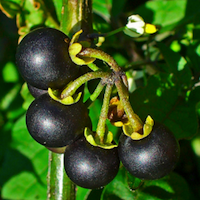 Smart Citations
Smart CitationsSee how this article has been cited at scite.ai
scite shows how a scientific paper has been cited by providing the context of the citation, a classification describing whether it supports, mentions, or contrasts the cited claim, and a label indicating in which section the citation was made.
Larvicidal activity of Vietnamese Solanum nigrum on mosquitoes Aedes aegypti and Aedes albopictus (Diptera: Culicidae)
A Vietnamese domestic plant namely Solanum nigrum (S. nigrum) was subjected to test for larvicidal activity on two majors Dengue hemorrhagic fever (DHF) vectors Aedes aegypti (Ae. aegypti) and Aedes albopictus (Ae. albopictus). The plant was processed to get infusions in hot water or extracted in ethanol. Laboratory and field larval strains of two Aedes species were exposed to the infusions and extract at increasing concentrations for one hour and followed-up intensively for up to 72 hours. The obtained results of bioassay showed larvicidal effects of extract on all mosquito strains. The effects on laboratory strain of Ae. aegypti larvae were correlated with infusions and extract concentrations. Chopped plant infusions in hot water indicated mortality up to 77.3% of larvae. Ground plant infusions killed all of exposed larvae at day 3 postexposure. Median lethal concentrations (LC50,s) of chopped and ground plant infusions were 10.25 and 7.54%, respectively. Ethanolic extract had very strong effect on experimental subjects. Within 72 hours, 100% of laboratory strain of Ae. aegypti larvae died after exposure to extract at 100 parts per million (ppm) or higher concentrations. Ethanolic plant extract showed similar larvicidal effect on field strains of Ae. aegypti and Ae. albopictus. The percentage mortality of field strains larvae reached 100% after exposure to 100 ppm of plant extract. At concentrations of 1000 ppm, 100% of exposed larvae died with 8 hours. LC50 on tested larvae was 25.07-33.60 ppm. Strong larvicidal activity of S. nigrum suggests the possible application in DHF vector control effort.
Downloads
Supporting Agencies
National Key Scientific and Technical Programs, Vietnam Ministry of Science and Technology.How to Cite
PAGEPress has chosen to apply the Creative Commons Attribution NonCommercial 4.0 International License (CC BY-NC 4.0) to all manuscripts to be published.

 https://doi.org/10.4081/jear.2020.8866
https://doi.org/10.4081/jear.2020.8866





